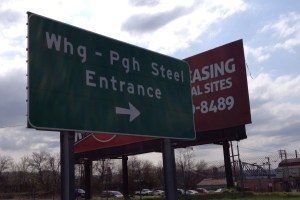
Steubenville, Ohio is one of those towns that boasts a long history of heavy industry. Way back to the 1840s, about the same time it received its charter, this city on the Ohio River was already teeming with mills of all sorts, Early plants made textiles, pottery, and glass, but it wasn’t long until there were coal mines and foundries in place as well.
As a matter of fact, the history of steel production in Steubenville dates back to the 1870s, with the expansion of the LaBelle Iron Foundry.
Today, there isn’t a lot of evidence of a prosperous Steubenville. For the most part, the foundries, mills, and plants have closed or, like Weirton Steel, have been forced to severely reduce their work forces. The community has suffered economically and younger generations have moved away.
Declining Population
As a matter of fact, census figures around the turn of the millennium showed that the Weirton–Steubenville population decreased faster than in any other urban area in the United States.
In addition from suffering from a lack of employment and severely decreased incomes, many of Steubenville’s many hard-working individuals have succumbed to mesothelioma or are currently suffering from the disease, which was caused by the rampant use of asbestos in many of the town’s plants and mills of yesteryear.
Up until the 1970s, these industries used asbestos materials for fire-proofing purposes and because of their durable nature. Unfortunately, the workers that regularly encountered asbestos-containing materials were adversely affected.
Asbestos Exposure In Steubenville
Asbestos exposure in Steubenville has affected individuals in a number of different trades. These have included steel workers, pipefitters, steamfitters, welders, millwrights, machinists, electricians, and a score of other individuals. Some of the places these mesothelioma victims worked include locations both in and around Steubenville, such as:
• Weirton Steel
• Wheeling-Pittsburgh Steel
• LaBelle Iron Works
• Jefferson Iron Works
• Federal Paper Board
• Wayne Coal Company
• Pope Tin Plate Co.
• Hartje Brothers Paper
• Keagler Brick Co.
• Steubenville Traction and Light Co.
• And many others
Most of the employees now being diagnosed with the disease probably encountered asbestos in the 60s and 70s, when there was already sufficient evidence that the mineral was causing severe respiratory problems in individuals who were exposed to it on a regular basis.
Over the years, evidence has been shown in courts of law stating that owners, managers, and other executives often knew about asbestos’ dangers yet refused to use a substitute material, usually because safer materials were more expensive. The result has been generations of Steubenville workers touched by asbestos cancer.
